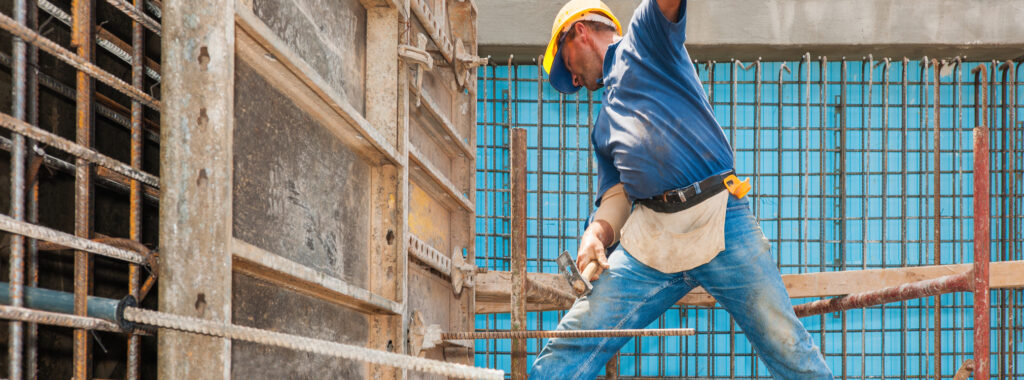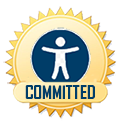
Scaffold Hazard Safety Tips for Construction Sites
Scaffold hazards are risks construction workers face when using or working near scaffolds. These hazards can lead to serious accidents, making scaffolding safety a critical concern on construction sites.
Understanding Scaffold Hazards
The most common scaffolding hazards include falling, being struck by objects, electrocution, and scaffold collapse. Mitigating these risks involves proper techniques, equipment, processes, and training. Understanding and addressing these hazards are vital steps in improving safety standards and preventing accidents on construction sites.
Common Scaffolding Hazards on Construction Sites
The most common scaffolding hazards include falls, being struck by falling objects, scaffold collapses, and improper planking.
According to the Bureau of Labor Statistics, 72% of scaffold accidents are attributed to these causes. These hazards pose serious risks to worker safety and can lead to severe injuries or fatalities.
Understanding these common hazards is the first step in preventing accidents. In the following subsections, we’ll explore fall hazards, structural failures, and electrical hazards in more detail, providing practical tips and safety measures to mitigate these risks and significant hazards.
Fall Hazards and Prevention
Falls are the leading cause of scaffold accidents, primarily due to inadequate fall protection measures. Common reasons for falls include:
- The absence of guardrails
- Faulty installations
- The failure to use personal fall arrest systems
Robust fall prevention measures are necessary to protect workers from these significant hazards. Key fall prevention measures include the installation of guardrails on scaffolds above 10 feet, the proper use of personal fall arrest systems, and maintaining clear walking surfaces to prevent falls. Training workers to recognize fall hazards and implement safety measures is also crucial to ensuring their safety against falls.
Structural Failures and Scaffold Collapse
Structural failures and scaffold collapses are among the most dangerous scaffolding hazards. Improperly assembled scaffolding can lead to structural instability and potential collapses. To avoid such incidents, scaffolds should be capable of supporting their weight plus four times the intended load.
Preventing scaffold collapse requires careful attention to construction details, including:
- Good foundation stability
- The location of scaffold planks
- Adherence to tie-in regulations
- Using high-quality materials that meet structural and safety standards
- Conducting regular inspections to identify and address issues such as loose planks, rust, or deterioration that could compromise the scaffold
Electrical Hazards from Overhead Power Lines
Electrocution is a significant risk when scaffolding is erected near power lines or when electrical wires are damaged or compromised. Scaffolds should be maintained at least 10 feet away from electrical hazards to prevent electrocution.
Importance of Regular Inspections
Regular inspections by trained personnel are crucial for identifying and mitigating potential scaffold risks. A competent individual, as defined by OSHA, is required to conduct scaffold inspections to identify and address potential safety hazards. Failure to perform regular inspections can lead to serious accidents and injuries on construction sites.
Inspections should verify that scaffolds meet design and engineering specifications, ensuring they are adequately secured, level, and capable of supporting the intended loads.
Suspended scaffolds must be inspected at the start of each shift and after any incidents that could compromise their structural integrity.
Routine inspections help ensure that scaffolding is stable, with all components, such as guardrails and top rails, correctly installed.
Essential Safety Measures for Scaffolding
Implementing essential safety measures for scaffolding is crucial to prevent accidents and ensure the safety of workers.
Proper Scaffold Setup and Design
Proper scaffold setup and design are crucial in preventing scaffolding hazards. Key general requirements include:
- Scaffolds must meet strict design specifications.
- They must be capable of supporting their weight plus at least four times the maximum intended load, including supported scaffolds and a scaffolding platform.
- Exceeding weight limits can lead to structural weakening and potential collapse. Scaffold designers play a crucial role in ensuring these standards are met.
Using an inappropriate type of scaffold can result in instability and structural failure. It may also lead to noncompliance with safety regulations. Proper scaffolding use requires proper design, assembly, inspection, and training.
A qualified person is responsible for selecting the appropriate scaffold for the job.
Use of Personal Protective Equipment (PPE)
The use of personal protective equipment (PPE) is crucial for scaffold workers to ensure their safety. Recommended PPE includes hard hats, anti-slip boots, and gloves. These items protect workers from falling objects and slipping hazards, significantly reducing the risk of injuries.
Additionally, all workers must receive training in the use of PPE to maximize its effectiveness.
Training and Certification Requirements
Proper training and certification are crucial for scaffolding safety, significantly reducing the risk of accidents. Understanding the hazards associated with scaffolds is essential in implementing effective safety measures. All workers involved in erecting and dismantling scaffolding must receive training from a competent person, at the employer’s expense.
Certification ensures that only qualified personnel erect scaffolds, contributing to overall safety. Workers must be knowledgeable about essential scaffold-related topics, including load limits and fall protection, to ensure safe practices.
Regular refresher training is critical to ensure compliance with safety protocols and keep workers informed about new safety measures.
Best Practices for Scaffold Dismantling
Safe dismantling of scaffolding is crucial to prevent accidents and ensure worker safety during this high-risk phase. Workers should wear fall protection gear when dismantling scaffolds to ensure their safety. Ensuring that each level of the scaffold is fully disassembled before moving on to the next level is essential to maintain stability.
Implementing a Scaffolding Safety Checklist
A scaffolding safety checklist is essential for identifying hazards and ensuring safety during construction work. This checklist helps in maintaining a record of inspections and safety measures implemented, ensuring compliance with safety standards.
A ‘Scaff-Tag’ system must be used to indicate the inspection status at all access points to the scaffolding system. This system enables workers to determine whether a scaffold is safe to use, thereby preventing accidents and enhancing overall safety on the construction site.
Injuries Involving Scaffolding on a Construction Site
Approximately 9,750 of the over 510,500 annual injuries in the construction sector are associated with scaffolding accidents. These incidents result in around 60 fatalities annually in the U.S., with around 4,500 serious injuries reported each year. Common injuries from scaffolding accidents include traumatic brain injuries, spinal cord injuries, and broken bones.
A significant portion of scaffold accidents, around 72%, result from improper assembly, defective equipment, or slipping on slippery surfaces. Bystanders can also be injured in scaffold accidents, particularly when collapsing scaffolds affect those on the ground.
Contact a Construction Accident Lawyer
If you’ve suffered an injury through no fault of your own, you may be eligible for substantial financial compensation for medical bills and lost wages under workers’ compensation insurance. The Law Office of Nicholas E. Tzaneteas can help those who are victims of construction site injuries.
In addition, depending on the construction accident, injured workers in New York have other avenues available to them, including pursuing a personal injury lawsuit to recover compensation and/or a wrongful death claim. New York has specific Labor Laws in place to protect construction workers from hazardous job site conditions. If a worker is injured due to negligence by a construction company or property owner, they may be eligible to file a lawsuit.
The Law Office of Nicholas E. Tzaneteas can help interpret these laws and guide you through the legal process. The personal injury law firm has helped injured clients in New York City, the Bronx, Staten Island, and Queens recover millions of dollars in judgments and settlements.
Frequently Asked Questions
What are the most common scaffolding hazards?
The most common scaffolding hazards are falls, being struck by falling objects, electrocution, and scaffold collapse. It’s essential to implement safety measures to mitigate these risks.
How can fall hazards be prevented on scaffolds?
To prevent fall hazards on scaffolds, install guardrails, utilize personal fall arrest systems, and ensure walking surfaces are kept clear. These measures are essential for maintaining safety.
Why are regular inspections of scaffolding important?
Regular inspections of scaffolding are crucial for identifying and mitigating risks, ensuring that scaffolds are secure, level, and capable of supporting intended loads. This proactive approach helps maintain safety on construction sites.
What personal protective equipment is recommended for scaffold workers?
Scaffold workers should wear hard hats, anti-slip boots, and gloves to ensure their safety on the job. These protective measures are essential to prevent injuries in a potentially hazardous environment.
How can a construction accident lawyer help after a scaffolding accident?
A construction accident lawyer can assist victims in obtaining financial compensation for medical expenses, lost wages, and pain and suffering while effectively guiding them through the legal process. Engaging a skilled attorney ensures that your rights are protected and that you receive the support you need.

